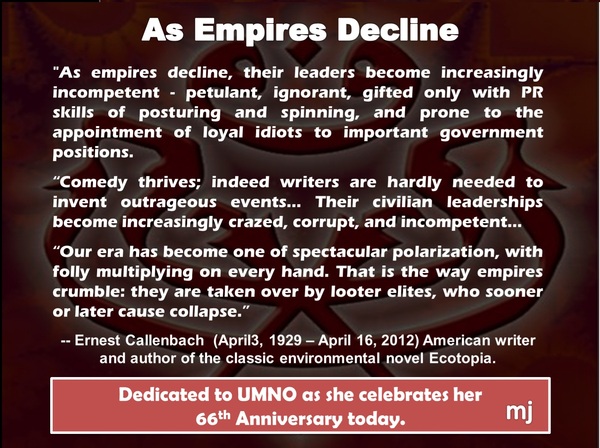— Hal Hill
The Malaysian Insider
May 14, 2012
MAY 14 — There is much to admire about Malaysia, in addition to it being arguably the world’s best place to eat. Its development record is admirable. Since independence in 1957, its per capita income has risen eight-fold. It has long since left behind its two earlier comparators, Ghana and Sri Lanka. It features prominently and positively in all major international economic comparisons, from the World Bank’s 1993 East Asian Miracle to the 2008 Growth Commission report. The 2.5 million to three million migrant workers are there for a good reason — even if they are sometimes subject to abuse, life is a lot better than in their homelands.
As a result of the country’s adept macroeconomic management, it has suffered just one serious economic setback, in 1997-98. That event had its origins at least partly in external factors, and it was promptly overcome, without the “assistance” of the IMF. The country has managed to avoid the “resource curse”, which has bedevilled the majority of resource-rich developing countries. It features well on most comparative rankings, such as the Bank’s Doing Business, and the Global Competitiveness Report.
Along with Singapore, it has enjoyed an early mover advantage from its adoption in the early 1970s of export-oriented industrialisation through foreign direct investment, before it was fashionable to do so. As a consequence, it is a major player in the global electronics industry. And although inequality remains high, there is no doubt that the bottom 40 per cent of Malaysian citizens have benefitted materially from the country’s economic growth.
What’s the economic problem, then? Principally, that the economy has yet to regain the dynamism evident before the 1997-98 Asian financial crisis. Even before the more recent global financial crisis, which Malaysia navigated quite successfully, economic growth in the new millennium was at least two percentage points below that of the decade 1986-96. Continue reading “Malaysia after regime change”

